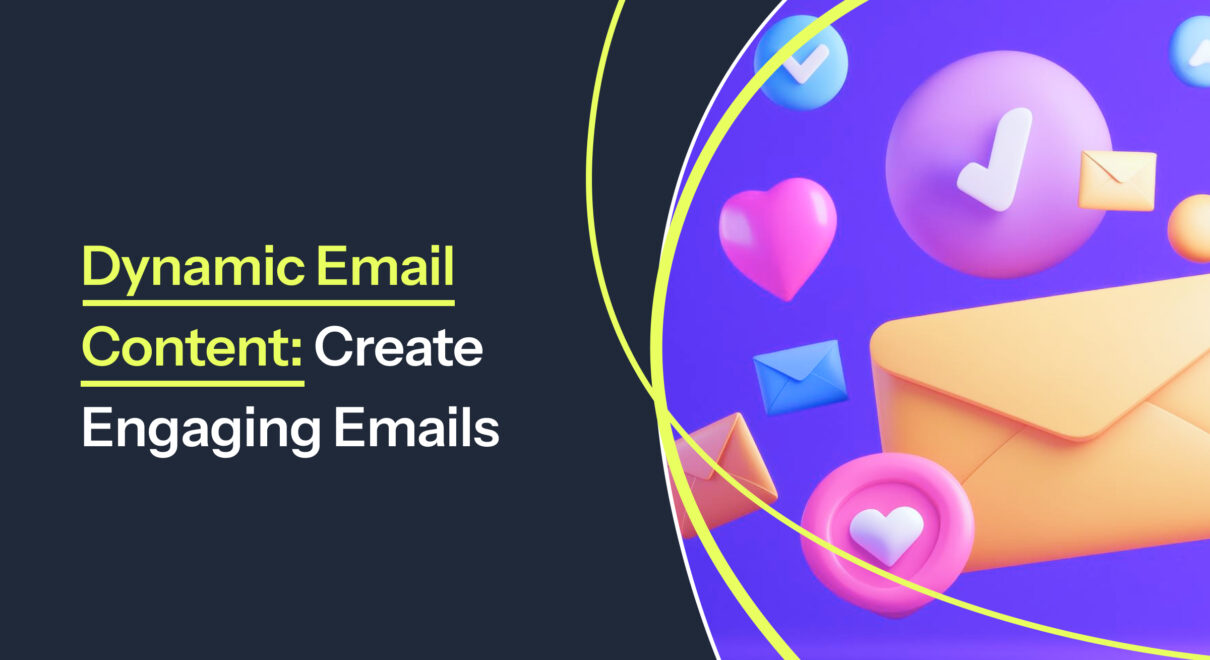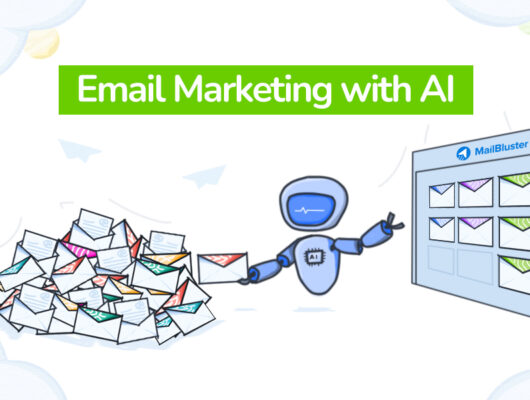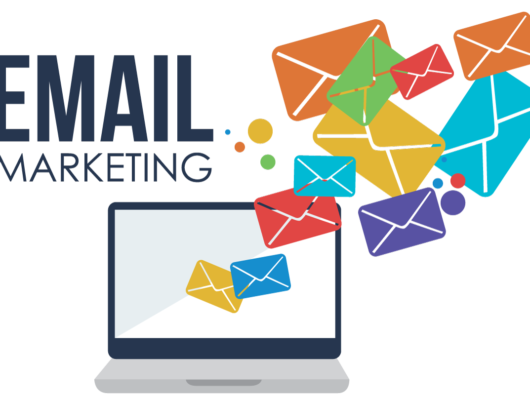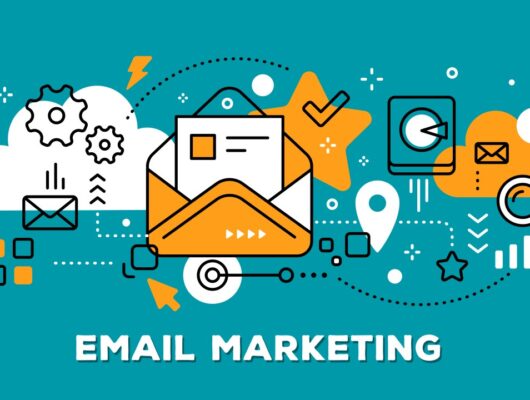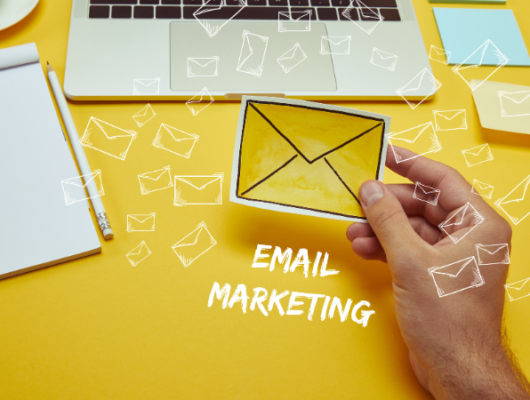Email marketing has evolved dramatically over the past decade, with advancements in technology allowing marketers to deliver highly personalized, timely, and relevant content.
One of the most powerful ways to achieve this is through dynamic email content. Dynamic content allows email marketers to send tailored messages to each recipient based on their preferences, behaviors, demographics, or past interactions with a brand.
In this article, we’ll dive into what dynamic email content is, why it matters, and how you can effectively use it to enhance your email marketing strategy.
1. What is Dynamic Email Content?
Dynamic email content refers to email elements that automatically adjust or change based on a recipient’s characteristics, behavior, or other data. This could include changing images, text, product recommendations, or offers based on specific customer data, such as their location, purchase history, browsing behavior, or engagement with previous emails.
Unlike static emails, where the content is the same for every recipient, dynamic email content enables marketers to deliver highly personalized experiences. Dynamic content can be inserted into emails based on segments or individual attributes, ensuring that each recipient sees content tailored to them.
Examples of dynamic email content:
- Personalized greetings, such as using the recipient’s name.
- Tailored product recommendations based on previous purchases or browsing behavior.
- Location-based offers (e.g., discounts for a nearby store).
- Custom calls-to-action (CTAs) depending on the recipient’s activity or engagement level.
2. Why is Dynamic Email Content Important?
The ability to send dynamic email content is crucial in today’s competitive marketing landscape. Here’s why it matters:
a) Increased Relevance
By using dynamic content, you ensure that the email content is relevant to the individual recipient. When emails are tailored to a customer’s preferences or behaviors, they feel more personal, which increases the likelihood of them opening, engaging with, and acting upon the email.
b) Improved Engagement
Relevancy is a key factor in email engagement. When customers see content that matches their interests, they are more likely to interact with the email—whether that’s clicking a link, browsing products, or making a purchase. Personalized emails with dynamic content typically have higher open and click-through rates.
c) Higher Conversion Rates
Dynamic email content plays a vital role in driving conversions. By sending targeted offers or product recommendations based on the recipient’s actions or profile, you make it easier for them to take the next step in the customer journey. Personalized emails lead to more purchases, sign-ups, and other desired outcomes.
d) Customer Loyalty and Retention
Personalized, dynamic emails help foster stronger relationships with your customers. By sending relevant content that aligns with their preferences and behaviors, you demonstrate that you understand their needs, which builds trust and encourages long-term loyalty.
3. Types of Dynamic Email Content
Dynamic content can take many forms depending on the customer data available and the goal of the email campaign. Here are some of the most common types of dynamic email content:
a) Personalized Product Recommendations
One of the most popular uses of dynamic email content is personalized product recommendations. By analyzing a customer’s past purchases, browsing history, or wish list, you can suggest products they’re likely to be interested in. This kind of dynamic content is especially powerful in e-commerce, where cross-selling and upselling opportunities are abundant.
Example:
If a customer recently purchased a camera, you could send an email featuring camera accessories like tripods, lenses, or camera bags.
b) Location-Based Offers
If you have geographic data about your subscribers, you can tailor content based on their location. Location-based dynamic content might include promotions or product recommendations specific to their region, or it might promote events, store openings, or special offers that are geographically relevant.
Example:
“Hi Sarah! Enjoy 20% off your next purchase at our [City] store, valid until the end of the month.”
c) Behavioral Trigger Emails
Behavior-triggered emails are one of the most effective uses of dynamic content. These emails are sent automatically when a customer engages in specific actions, such as abandoning a cart, browsing a product, or completing a purchase. Dynamic content in these emails could change based on the customer’s behavior.
Example:
A customer abandons a cart with a pair of shoes. You send a dynamic email that shows the exact shoes they left behind along with similar styles they might also like.
d) Time-Sensitive Offers
Dynamic email content can be used to create urgency with time-sensitive offers. For example, you can change the content of an email based on when it is opened, offering different discounts or deals depending on how much time has passed since the recipient last engaged with your brand.
Example:
“Hey John! Your exclusive 25% off coupon expires in 24 hours—don’t miss out!”
e) Seasonal Promotions and Events
Dynamic content is particularly effective for seasonal promotions and events. By using the time of year, weather conditions, or holidays, you can personalize the email content to suit the recipient’s seasonal needs or interests.
Example:
“Fall is here, and we’ve got the perfect collection of cozy sweaters for you! Shop our new fall arrivals today.”
4. How to Implement Dynamic Email Content
To implement dynamic email content effectively, you’ll need the right tools and strategies in place. Here are the key steps to getting started:
a) Collect and Segment Customer Data
Dynamic content relies on customer data, so it’s essential to collect and analyze information like:
- Demographic data: Name, age, location, etc.
- Behavioral data: Previous purchases, pages viewed, email interactions, etc.
- Engagement history: Whether the recipient has opened or clicked on your past emails.
- Preferences: Any preferences the customer has shared (e.g., preferred product categories).
Segmenting your email list based on this data is critical to ensure that the right content is sent to the right people.
b) Choose an Email Marketing Platform with Dynamic Content Capabilities
Not all email platforms support dynamic content. You’ll need an email marketing tool that can incorporate dynamic elements, such as Klaviyo, Mailchimp, ActiveCampaign, or Campaign Monitor. These platforms allow you to create and insert dynamic content based on segmentation and customer data.
c) Create Dynamic Content Blocks
Dynamic content blocks are sections of the email that change based on customer attributes. For example, you might have a dynamic content block that displays personalized product recommendations or a special discount for specific customers. Set up these blocks to display content based on customer data or behavior.
d) A/B Testing and Optimization
As with any email marketing strategy, it’s essential to continuously test and optimize your dynamic email campaigns. A/B testing allows you to test different elements—like subject lines, product recommendations, and offers—to see which performs best for different segments of your audience. Use the insights gained to refine your dynamic content and improve future campaigns.
5. Best Practices for Using Dynamic Email Content
While dynamic content offers many benefits, there are a few best practices to keep in mind to ensure its success:
- Keep it relevant: Ensure that the dynamic content you display is highly relevant to the recipient. Avoid overwhelming them with too many options or irrelevant offers.
- Don’t overcomplicate: While dynamic content is powerful, it’s important to balance personalization with simplicity. Too much dynamic content can distract from the core message of your email.
- Respect privacy: Be transparent about how you use customer data and ensure that your practices comply with privacy regulations like GDPR and CAN-SPAM.
- Ensure mobile optimization: Make sure your dynamic email content is responsive and displays properly on all devices, especially mobile phones, as many users access emails on mobile.
- Test timing: When using time-sensitive dynamic content (like countdowns or limited-time offers), experiment with different time frames to see what works best for your audience.
Conclusion: Unlock the Power of Dynamic Email Content
Dynamic email content is a game-changer for marketers looking to deliver more personalized and relevant email experiences.
By tailoring your emails based on customer data, behaviors, and preferences, you can increase engagement, drive conversions, and foster stronger relationships with your audience.
To successfully implement dynamic email content, you’ll need to collect valuable customer data, segment your audience, use the right email marketing platform, and continuously optimize your campaigns.
With these strategies in place, you can create emails that feel personal, relevant, and timely—ultimately leading to better results for your business.
Start using dynamic email content today, and watch your email marketing strategy transform into a more powerful, results-driven approach!


